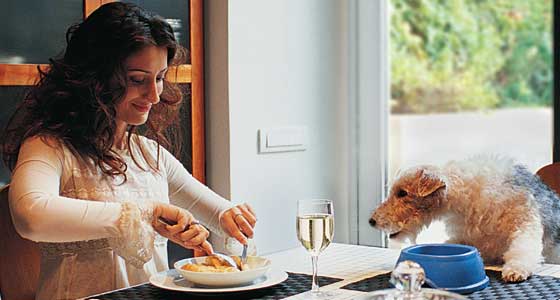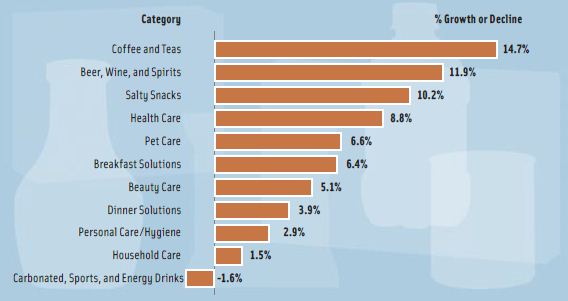"People and Pets Go More Gourmet"

The pursuit of a more exciting food experience—anytime and anywhere, the personalization of food quality, and a need for more-serious health solutions have sent sales of specialty food/beverage products for people and pets soaring. In 2013, specialty retail food sales topped $70 billion; for foodservice products, the total was $18 billion (Tanner, 2014).
Three-quarters of U.S. consumers—or 225 million adults—purchased specialty foods last year, up from 46% in 2009. Men are now as likely to buy gourmet foods/drinks as women (Tanner, 2013).
While mainstream markets still account for two-thirds of gourmet food sales, sales in specialty food stores skyrocketed 42% from 2011–2013 and climbed 34% in natural food retailers (Tanner, 2014).
The U.S. natural and organic food and beverage markets collectively reached sales of $50.8 billion in 2012, up 12.7% and 10.8%, respectively (NBJ, 2013a). Global natural/organic food/beverage sales were estimated at $112 billion in 2013, up 10% over 2012 (NBJ, 2013b).
Coffee/tea; beer, wine and spirits; salty snacks; and pet care are among the food-based consumer packaged goods sectors that achieved above-average dollar sales growth over the past two years, driven for the most part by innovation and often new technologies (e.g., K-cups) on the premium end (Figure 1; IRI 2014).
Figure 1. Dollar Sales Growth in Consumer Packaged Goods Categories, 2011–2013. (Average industry growth was 4.6%.)
Specialty Sales Surge In 2013, 42% of all U.S. adult eating occasions and one-third (33%) of snacking alone occasions involved a more-sophisticated food experience characterized by gourmet flavors, compelling narratives, freshness, unique ingredient origins, and/or culinary traditions (Hartman, 2013a).
Two-thirds of adults buy specialty foods for everyday meals at home; 36% purchase them for everyday snacks; 30% for special occasions at home; 15% to have on hand for unexpected guests; and 13% to impress family/friends (Tanner, 2013). Those ages 18–24 are the top specialty food buyers followed by those ages 25–64. Use of specialty foods by seniors (age 65+) jumped 14% from 2011 to 2013 (Tanner, 2013).
Chocolate, specialty oils, and cheese were the most frequently purchased gourmet food items in 2013, bought by more than half of specialty food shoppers; yogurt, coffee, salty snacks, nonalcoholic beverages, frozen desserts/ice cream, meat/poultry/seafood, and specialty breads/baked goods were purchased by more than 40% (Tanner, 2013


Comments
Post a Comment